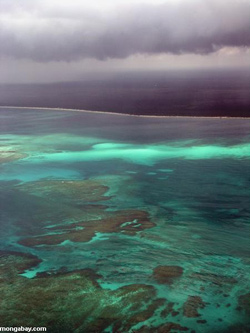Geoengineering schemes need ranking system to avoid wasting money, destroying the planet
Geoengineering schemes need ranking system to avoid wasting money, destroying the planet
mongabay.com
October 26, 2008
|
|
Schemes to alter Earth's climate on a planetary scale should be ranked according to their efficacy, cost, risks and rate of mitigation, argues a new editorial published in Nature Geoscience.
With so-called geoengineering proposals proliferating as concerns over climate change mount, Philip Boyd of New Zealand's NIWA warns that "no geo-engineering proposal has been tested or even subjected to preliminary trials". He says that despite widespread media attention, scientists have yet to even come up with a way to rank geoegineering schemes for their efficacy, cost, associated risk, and timeframe. Thus is it unclear whether ideas like carbon burial, geochemical carbon capture, atmospheric carbon capture, ocean fertilization, cloud manipulation, "space sunshades", or strategically-placed pollution can be effective on a time-scale relevant to humankind, economical, or even safe.
"The rationale for any geo-engineering scheme must be based on its efficacy," he writes, then noting that existing proposals have often started out with "overoptimistic claims on efficacy", "oversimplistic cost estimates", and failure to recognize "unwanted" and "potentially expensive" side-effects.

|
"Unintended changes in the Earth system could, to an unknown degree, cancel out the mitigation of climate change driven by geo-engineering, causing a reduction in the estimated efficacy of a scheme and an increase in its cost."
To better evaluate human solutions to a human-created problem, Boyd writes that scientists "must apply metrics that incorporate efficacy, cost, risk and time in order to rank where future research effort is best focused."
He proposes a transparent ranking system based on objective criteria to determine what projects are most promising and therefore worthy of limited government research funds.